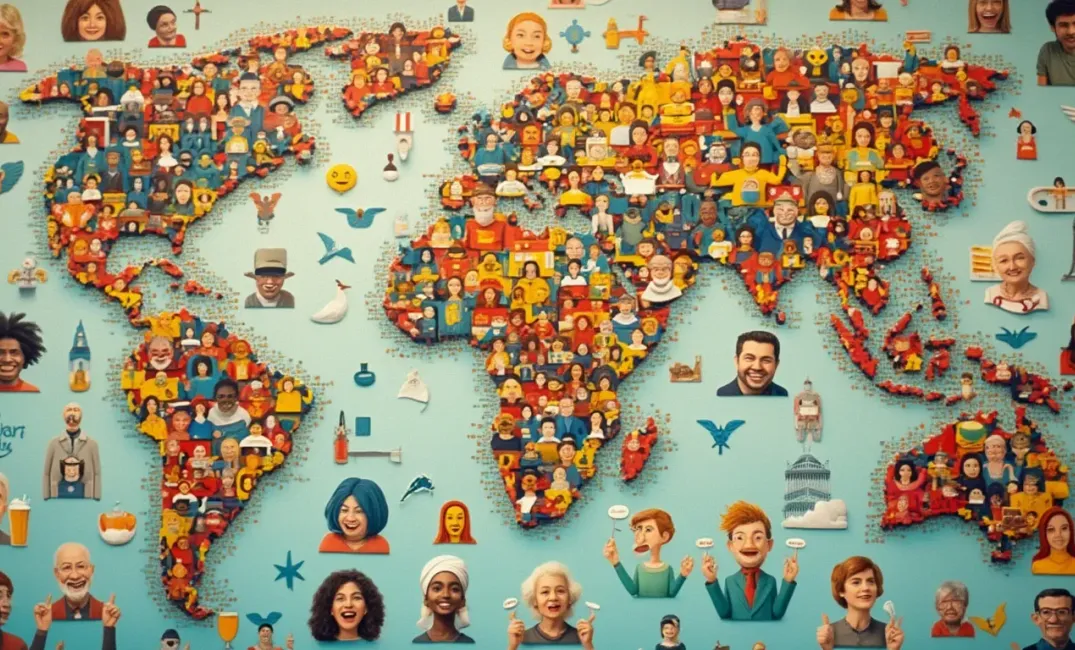Introduction: The Essence and Enigma of Laughter
Laughter is humanity's universal language, transcending cultural, linguistic, and geographical boundaries. It is an enigmatic quality woven into the fabric of human society that reflects both the absurdity and intricacies of existence. Through humor, humans have the remarkable ability to transcend adversity, forge bonds, and provide commentary on society's norms and values. This exploration delves into the essence of humor, its psychological and social underpinnings, the diverse expressions of humor across cultures, and its profound impact on human civilization.
"Laughter is the sun that drives winter from the human face." — *Victor Hugo*
The Origins and Evolution of Humor
The Biological and Psychological Foundations of Laughter
- Evolutionary Purpose of Laughter: From an evolutionary standpoint, laughter likely developed as a social bonding mechanism and a method for diffusing tension. Ancient communities may have used humor to foster cooperation, signal benign intentions, and reinforce group cohesion.
- Psychological Underpinnings: Humor engages the brain's pleasure centers, releasing endorphins that generate feelings of happiness and relaxation. This neurophysiological response contributes to humor's stress-relieving properties, playing a crucial role in mental well-being and social interaction.
The Theory and Structure of Humor
- Incongruity and Relief Theories: Various theories attempt to explain humor's mechanics. The incongruity theory proposes humor arises from the unexpected or incongruous juxtaposition of ideas, while relief theory suggests humor serves as a pressure valve for societal tensions.
- Superiority and Play Theories: Superiority theory posits that humor often involves feelings of superiority over others' misfortunes, errors, or absurdities, while play theory emphasizes humor's roots in play behavior, essential for social learning and bonding.
Humor Across Cultures and History
Cultural Nuances and Expressions of Humor
- Cultural Relativity of Humor: Humor is deeply embedded in cultural contexts, with varying symbols, taboos, and traditions influencing its styles and interpretations. Examples include British dry wit, American slapstick, Japanese manzai, and South African satire, each reflecting cultural priorities and histories.
- Transcultural Humor: Despite cultural variations, certain humor transcends boundaries, such as simple physical comedy or universally relatable situations, underscoring shared human experiences that evoke laughter across diverse populations.
Historical Reflections of Humor
- Ancient and Medieval Laughter: Humor has been documented throughout history, from ancient Greek plays and Roman satires to medieval jesters who used humor to critique power structures. These historical instances highlight humor's dual role as entertainment and societal commentary.
- Humor as Resilience in History: In times of conflict and oppression, humor has often been a resilient response, providing escapism and hope. From the satire during WWII to contemporary political cartoons and late-night comedy shows, humor remains a subversive force challenging authority and sparking dialogue.
The Function and Impact of Humor in Society
Social Cohesion and Identity
- Humor and Social Bonding: Humor strengthens social bonds by creating shared experiences and facilitating group identity. It can act as a social tool to diffuse tensions, mediate conflicts, and unify people through common laughter.
- Understanding and Empathy: Humor encourages perspective-taking and empathy by exposing oneself to diverse viewpoints, breaking down stereotypes, and offering liberating comedic insights into sensitive topics.
Humor's Role in Social Critique and Change
- Satire and Commentary: Satire has been a vehicle for social critique, using wit to highlight societal issues, hypocrisies, and injustices. Iconic figures and literary works have historically leveraged humor to advocate change by critiquing prevailing norms.
- Activism and Awareness: Humor remains a potent force for activism, creating approachable entry points for raising awareness on pressing issues. Comedic formats enable engagement with challenging topics, encouraging individuals to confront uncomfortable truths.
Humor in the Modern World: Challenges and Opportunities
The Evolution of Humor in the Digital Era
- Global Platforms and Viral Comedy: Social media and digital platforms transform humor's dissemination, making it more instantaneously global and relatable. Memes, gifs, and short-form videos epitomize humor adapted to the rapid consumption patterns of modern audiences.
- Challenges of Online Humor: Amid the rapid spread of digital humor lies the challenge of context collapse—in which the nuanced understanding of jokes can be lost or misconstrued, leading to conflicts and debates over cultural sensitivity and appropriateness.
Humor Therapy and Mental Health
- Therapeutic Benefits: Humor therapy, applied alongside conventional treatments, emphasizes laughter's healing properties. It has demonstrated efficacy in reducing anxiety, enhancing mood, and creating supportive environments for individuals coping with stress or illness.
- Humor as Emotional Resilience: Embracing humor as an emotional resilience strategy fosters adaptability and courage. It reframes adversity, offering a positive outlook by facilitating cognitive shifts, reassuring individuals of their capacity to overcome challenges.
The Future of Humor: Embracing Diversity and Innovation
Evolving Ethics and Inclusivity in Humor
- Redefining Boundaries: As societies progress towards greater inclusivity, re-evaluating humor's boundaries becomes crucial. Ensuring laughter doesn't reinforce stereotypes or inequalities asks comedians and creators to balance creativity with empathy and responsibility.
- Diversity in Comedy: Increasing diversity within comedy challenges dominant cultural paradigms, amplifying underrepresented voices. Comics from diverse backgrounds contribute new narratives, enriching the comedic landscape with fresh perspectives and experiences.
Innovation and Creativity in Humor
- Form and Platform Innovations: Technological advancements continue to innovate humor delivery methods, blending traditional formats with virtual reality, interactive storytelling, and AI-generated content, expanding the comedic repertoire.
- Humor and Interdisciplinary Collaboration: Collaborations between humorists, psychologists, technologists, and educators may unlock novel applications and understandings of humor, enhancing its potential as a transformative societal tool.
Conclusion: Laughter’s Legacy and Humanity's Future
Humor stands as a multifaceted tapestry of human expression, with each culture and era weaving its distinct threads into the grandest chronicle of shared humanity. It is a testament to the vibrancy, creativity, and resilience inherent in people, bridging divides, mending wounds, and offering profound insights into the human condition.
"Against the assault of laughter, nothing can stand." — *Mark Twain*
As humanity continues its cosmic journey, humor accompanies it as an eternal ally, a beacon of light shining across the expanse of space and time. It is a treasure, uniting the scattered remnants of cultures, echoing across stars as a reminder of where we've been and the vibrant, interconnected world we dream to create anew.
EVOLUTION, PSYCHOLOGY, CULTURE, HUMOR, SOCIETY, COMEDY, LAUGHTER

